Key takeaways
- Behaviorism emphasizes observable behavior and environmental influences over internal mental states, reshaping our understanding of learning and teaching.
- Skinner’s operant conditioning highlights the role of rewards and punishments in behavior modification, prompting reflection on personal agency and environmental impact.
- Effective evaluation techniques in education include systematic tracking of behavior, adapting feedback methods, and conducting behavior experiments to understand student motivations.
- Challenges in behaviorism include differentiating genuine learning from temporary changes, capturing the complexities of human behavior, and addressing the ethical implications of behavior manipulation.
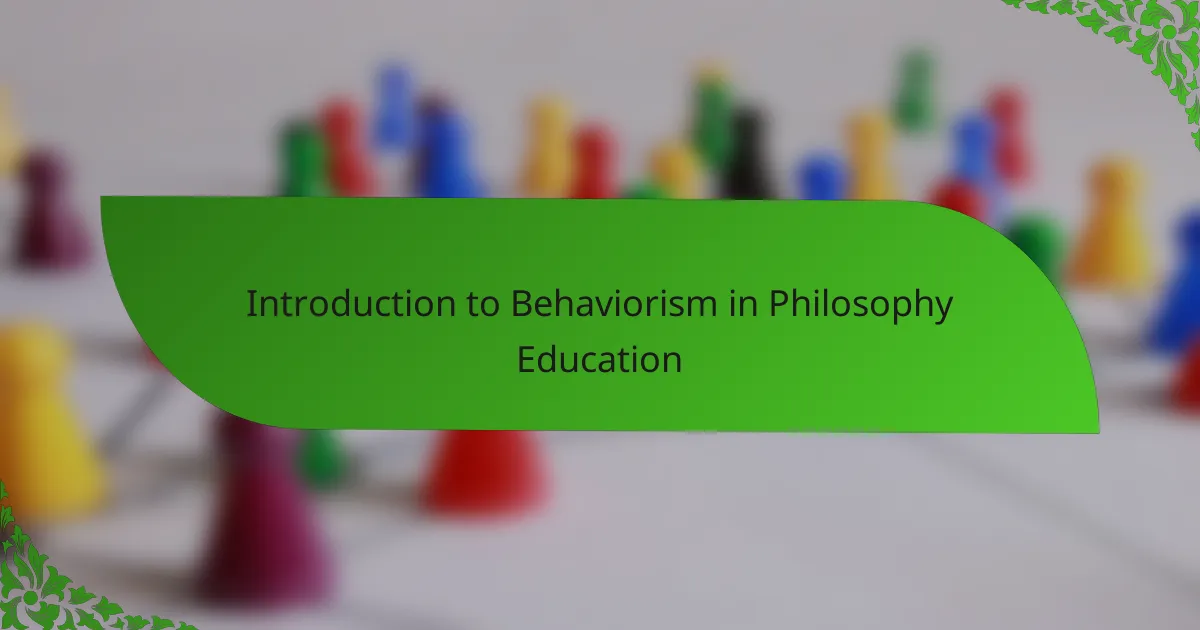
Introduction to Behaviorism in Philosophy Education
Behaviorism, as a philosophical approach, often feels both straightforward and deeply challenging. When I first encountered it in my philosophy classes, I was struck by its focus on observable behavior rather than internal mental states—a shift that felt both refreshing and, to be honest, a bit unsettling. Have you ever wondered how much of what we do is shaped purely by external cues, rather than our own unseen thoughts?
In philosophy education, behaviorism pushes us to reconsider how knowledge and learning are framed. It’s tempting to think that philosophy is all about abstract ideas, but behaviorism reminds me that the way we act and respond to our environment speaks volumes about our understanding and cognition. This practical angle often brings a new dimension to teaching and learning philosophy, making it feel less like an ivory tower and more like a dynamic exchange.
Engaging with behaviorism personally made me rethink not only how I teach but how I learn. It challenged me to observe patterns in behavior without jumping straight to assumptions about motives or intentions. This shift in perspective can be quite liberating—don’t you think it’s intriguing to focus on what can be seen and measured, rather than what lies hidden inside the mind?
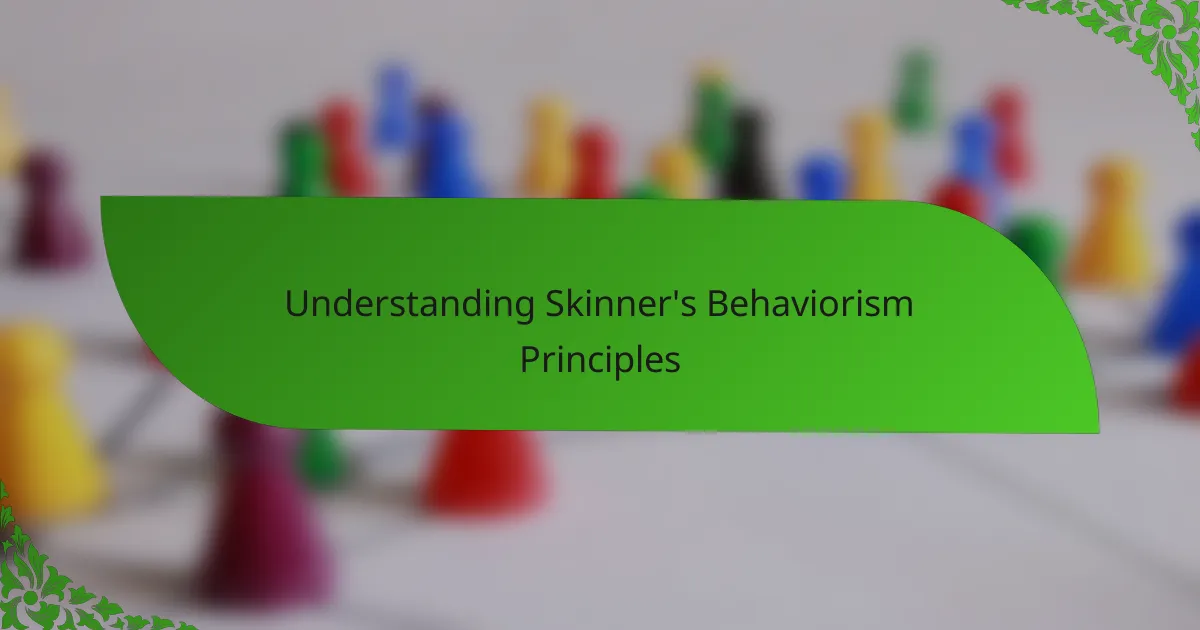
Understanding Skinner’s Behaviorism Principles
Skinner’s behaviorism hinges on the idea that behavior is shaped primarily by its consequences—a concept called operant conditioning. When I first grasped this, it felt almost like uncovering a secret recipe: rewards and punishments aren’t just about rewards and punishments; they are the very tools through which behavior is molded. Isn’t it fascinating to realize how much our actions might be influenced by this invisible feedback loop?
What struck me deeply was Skinner’s rejection of internal states as causes of behavior. Instead, he insisted that only observable actions and their consequences matter. At first, this seemed to erase personal agency, but then I realized it actually highlights the power of the environment. Have you ever thought about how your surroundings, unnoticed and subtle as they are, quietly steer your choices and habits every day?
Exploring Skinner’s principles made me more aware of how systematic behavior shaping can be both a practical tool and a philosophical challenge. It’s not just about controlling others—it’s about understanding the nuances of cause and effect in human action. This perspective pushed me to question: how much of what we call “free will” might just be well-trained behavior in disguise?
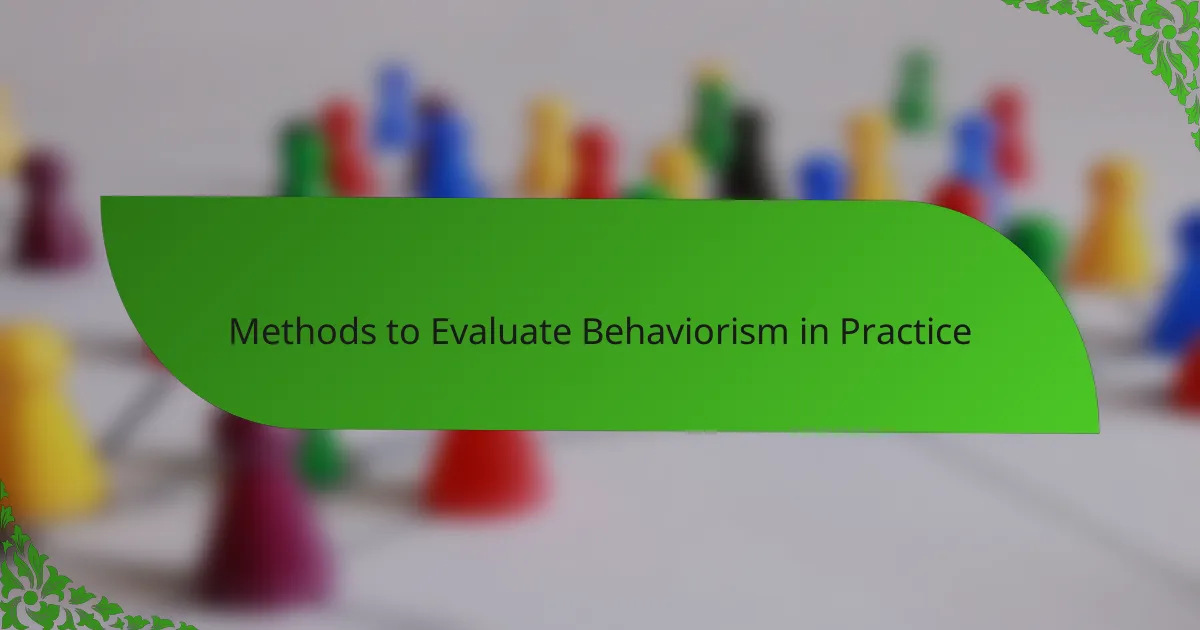
Methods to Evaluate Behaviorism in Practice
Evaluating behaviorism in practice often starts with observing real-world interactions—think of how a teacher rewards or ignores student behavior and watches for changes. When I tried this myself, tracking responses felt like tuning into a silent conversation between action and consequence. Doesn’t it make you curious how subtle adjustments in encouragement can shift entire patterns of behavior?
Another method I found useful is systematically recording behavior changes over time, using tools like charts or behavior logs. At first, it seemed tedious, but I soon realized that this careful tracking uncovers patterns you might otherwise miss. Have you ever been surprised by how consistent or unpredictable behavior turns out to be once you start measuring it closely?
Then there’s the experimental approach—setting controlled conditions that test specific variables influencing behavior. I once replicated a simple operant conditioning setup and was amazed by how quickly behaviors adjusted when consequences changed. This hands-on method doesn’t just confirm Skinner’s theories; it makes you experience the shaping power of conditions firsthand, which is both enlightening and somewhat humbling.

Applying Evaluation Techniques in Education
Applying evaluation techniques in education often means stepping back and watching how students respond to different incentives or consequences. I remember adjusting my own feedback style to reward small achievements, and it was striking to see a noticeable shift in engagement almost immediately. Isn’t it amazing how something as simple as timely praise can act like a nudge steering behavior?
Keeping detailed records of student behavior and progress was another eye-opener for me. At first, logging every response felt overly meticulous, but over time, the patterns that emerged were like pieces of a puzzle falling into place. Have you noticed how subtle habits suddenly become obvious when you track them instead of just relying on memory?
I also experimented with setting up mini “behavior experiments” in my classroom—altering one variable at a time to see its effect. The results weren’t just data points; they felt like real conversations with my students’ motivations and choices, unfolding before my eyes. Don’t you find it rewarding when theory moves off the page and into genuine interaction?
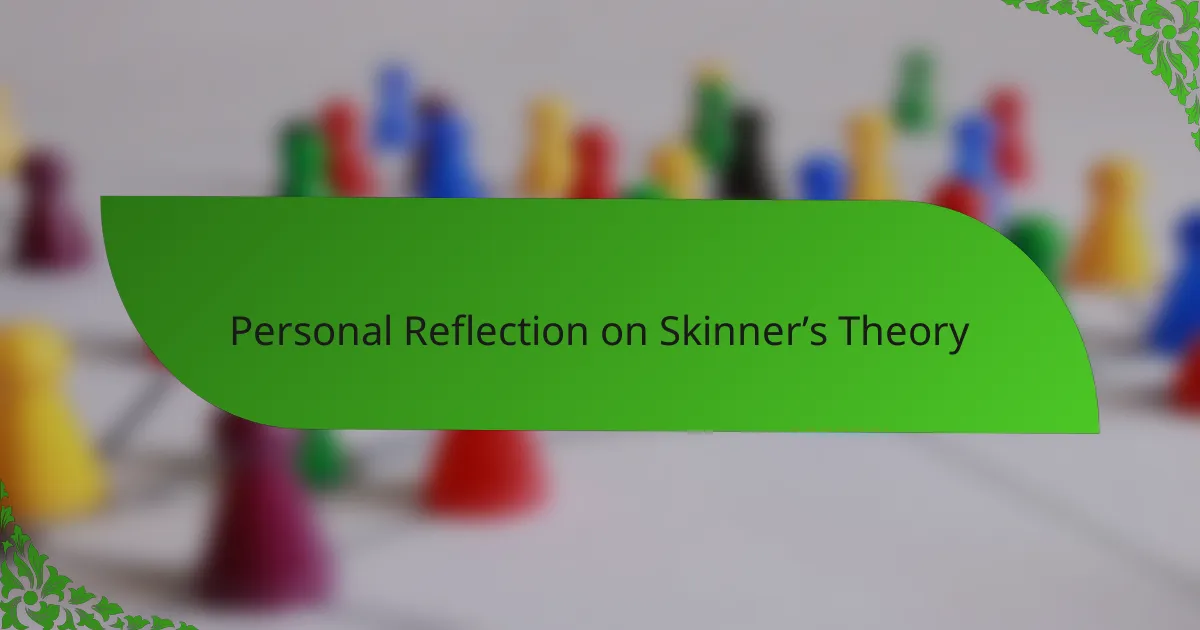
Personal Reflection on Skinner’s Theory
When I first truly reflected on Skinner’s theory, I found myself torn between admiration and skepticism. On one hand, the clarity of focusing solely on observable behavior felt empowering; it gave me a concrete lens to study human actions without getting lost in abstract mental states. But on the other hand, I couldn’t help but wonder—does ignoring inner experiences risk oversimplifying the complexity of human nature?
What really stayed with me was how Skinner’s ideas challenged my assumptions about personal responsibility. If our behaviors are shaped by consequences, am I just a product of my environment rather than an independent agent? Wrestling with this question was uncomfortable but also oddly freeing—it made me realize how much influence the context around us holds, and it pushed me to be more mindful of the subtle cues I respond to daily.
At times, I also felt a bit uneasy about the potential for manipulation inherent in operant conditioning. Yet, in practice, I witnessed its power to encourage positive change, especially in educational settings. This tension between control and care made me reflect deeply on the ethics of applying Skinner’s principles—how can we use behaviorism responsibly without reducing individuals to mere subjects of conditioning?
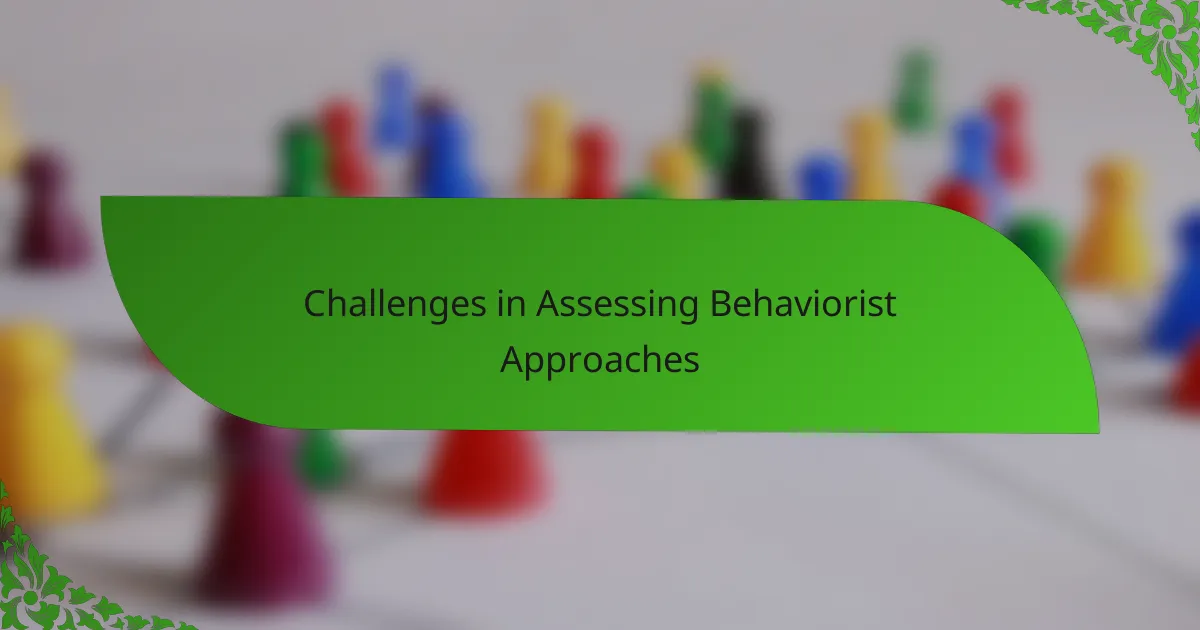
Challenges in Assessing Behaviorist Approaches
Assessing behaviorist approaches isn’t as straightforward as it seems. One challenge I encountered is separating genuine behavior change from temporary reactions to rewards or punishments. Have you ever noticed how sometimes a rewarded behavior fades once the incentive disappears? It made me question: are these changes truly learning or just surface-level adjustments?
Another difficulty lies in capturing the full scope of human behavior through observation alone. While Skinner emphasizes observable actions, I found myself wondering what crucial aspects might be missed—like thoughts or emotions hidden beneath the surface. Can we really understand behavior without acknowledging these inner experiences?
Finally, I struggled with the ethical dimension while assessing behaviorism. When does guiding behavior become manipulation? In my experience, applying operant conditioning requires a delicate balance between influence and respect, and this tension makes evaluation complex. How do we ensure that behaviorist methods empower rather than diminish personal autonomy?
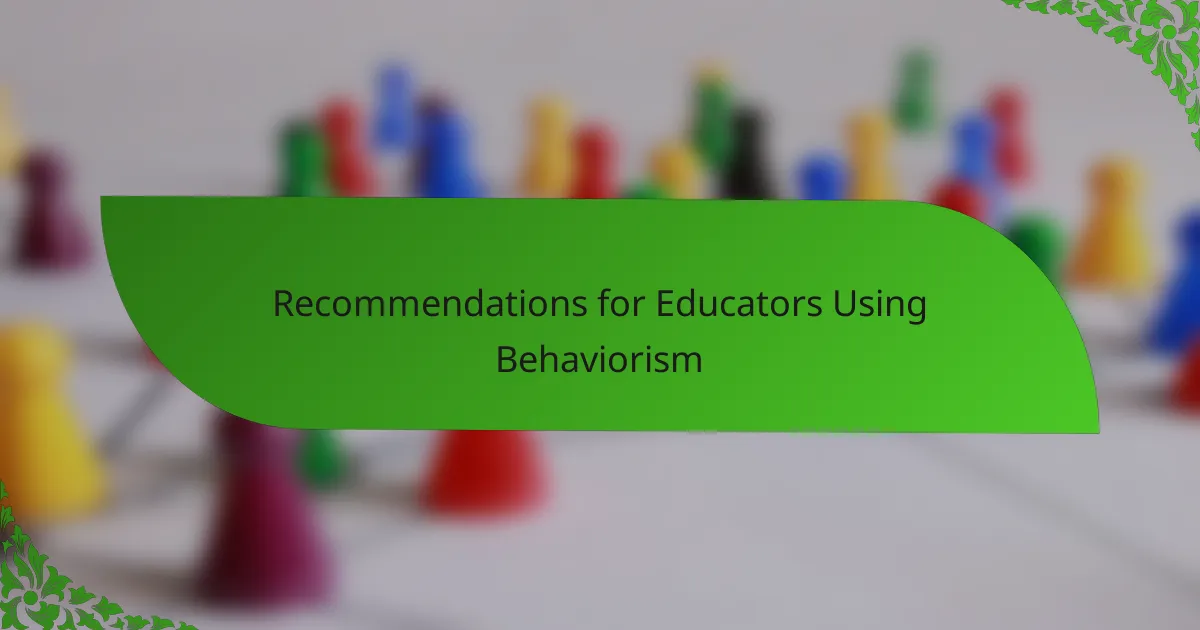
Recommendations for Educators Using Behaviorism
When I incorporated behaviorism into my teaching, I quickly realized that clear, consistent feedback is crucial. Rewarding desired behaviors immediately helps students link actions to outcomes, making learning more tangible. Have you tried adjusting your reinforcement timing and noticed how engagement responds almost like clockwork?
I also found that varying the type of reinforcement—sometimes praise, other times tangible rewards or privileges—keeps motivation from becoming stale. It feels like finding the right “language” to speak to each student’s unique drivers. Isn’t it interesting how what works wonders for one learner might do little for another?
Lastly, patience is key. Behavior change doesn’t happen overnight, and tracking progress over weeks revealed patterns that short-term observation missed. Personally, I’ve learned to celebrate small steps, knowing they’re the building blocks of lasting learning. Have you found that steady, measured encouragement often leads to the deepest, most meaningful shifts?